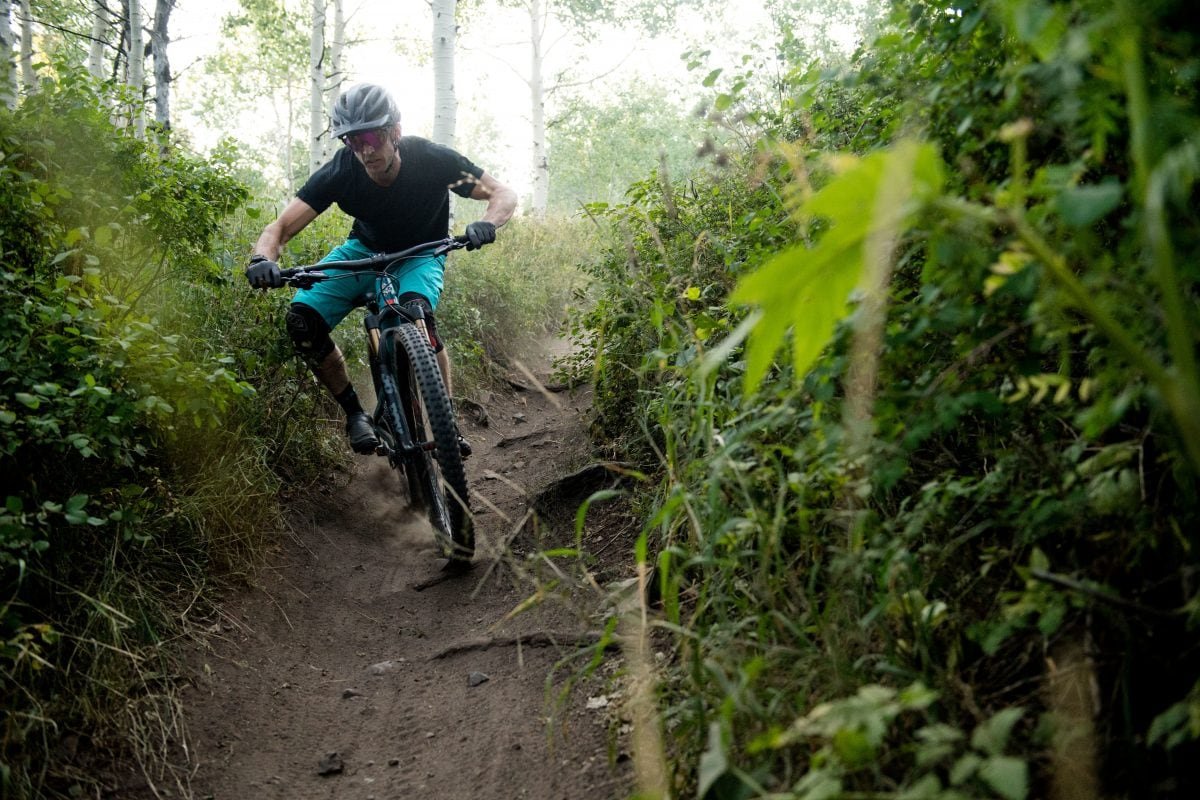First Impressions: Yeti SB130 vs. SB150
There has always been something special about riding a Yeti Superbike. It isn’t just that unexplainable Yeti mystique either. Superbikes are very highly evolved members of the Yeti family tree. Compared to the turquoise painted aluminum steeds that reigned in decades past, Superbikes may as well be their very own species.
It’s no accident that Superbikes are such impressive machines. Racing, and winning, are a part of the Superbike’s DNA. Yeti had something to prove when it disbanded its World Cup downhill program at the height of its success, choosing to focus the then obscure Enduro World Series and taking with it their top prospect, Richie Rude, who had only just been crowned junior Downhill World Champion. From that point forward, Richie and the rest of the Yeti team would be racing Superbikes, and to say that pairing has been successful would be a massive understatement.
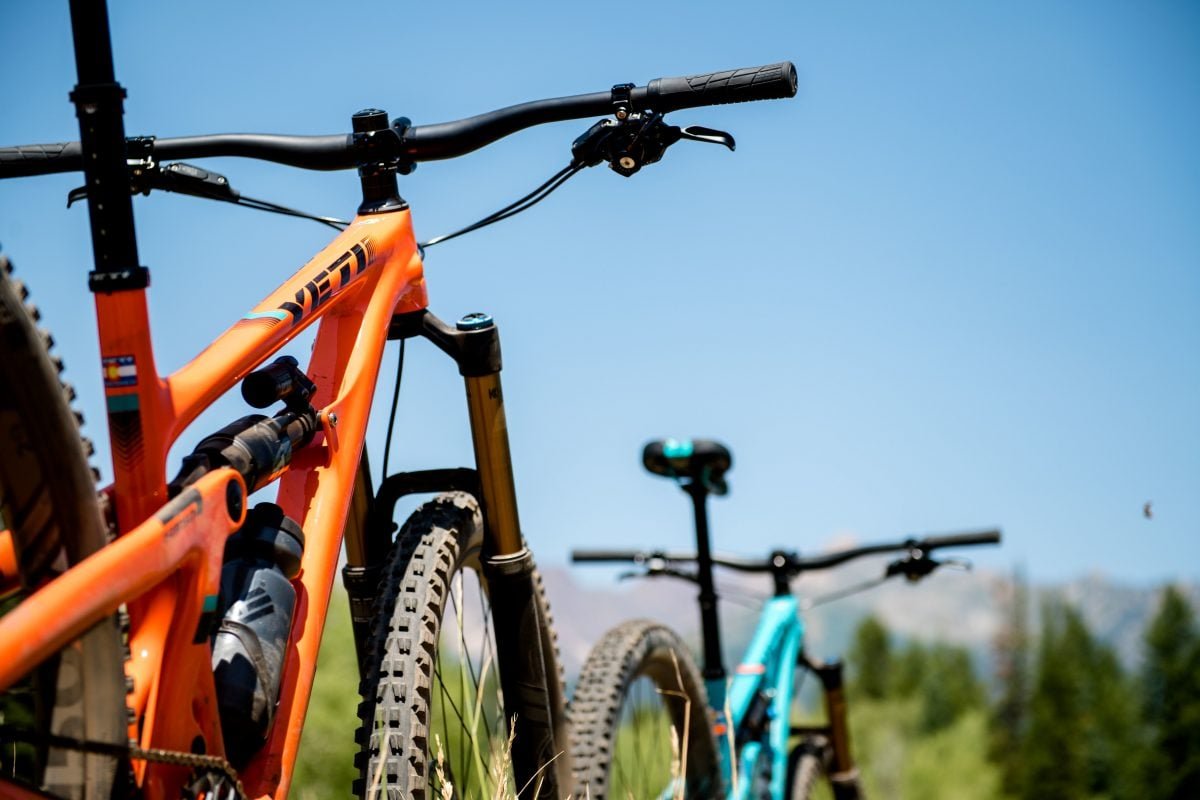
2018 is a big year for Yeti’s Superbikes, and the story is much bigger than simply the addition of bottle mounts inside the front triangle. Although we’ve grown fond of the outgoing SB4.5c and SB5.5c
Overview
The two offerings in question are named for the amount of travel that their Switch Infinity suspension design makes at the rear wheel. The SB130 is recommended for use with a 150mm travel fork and the is SB150 best paired with a massive 170mm travel fork. In both cases, the fork’s travel is more suggestive of each bike’s demeanor.
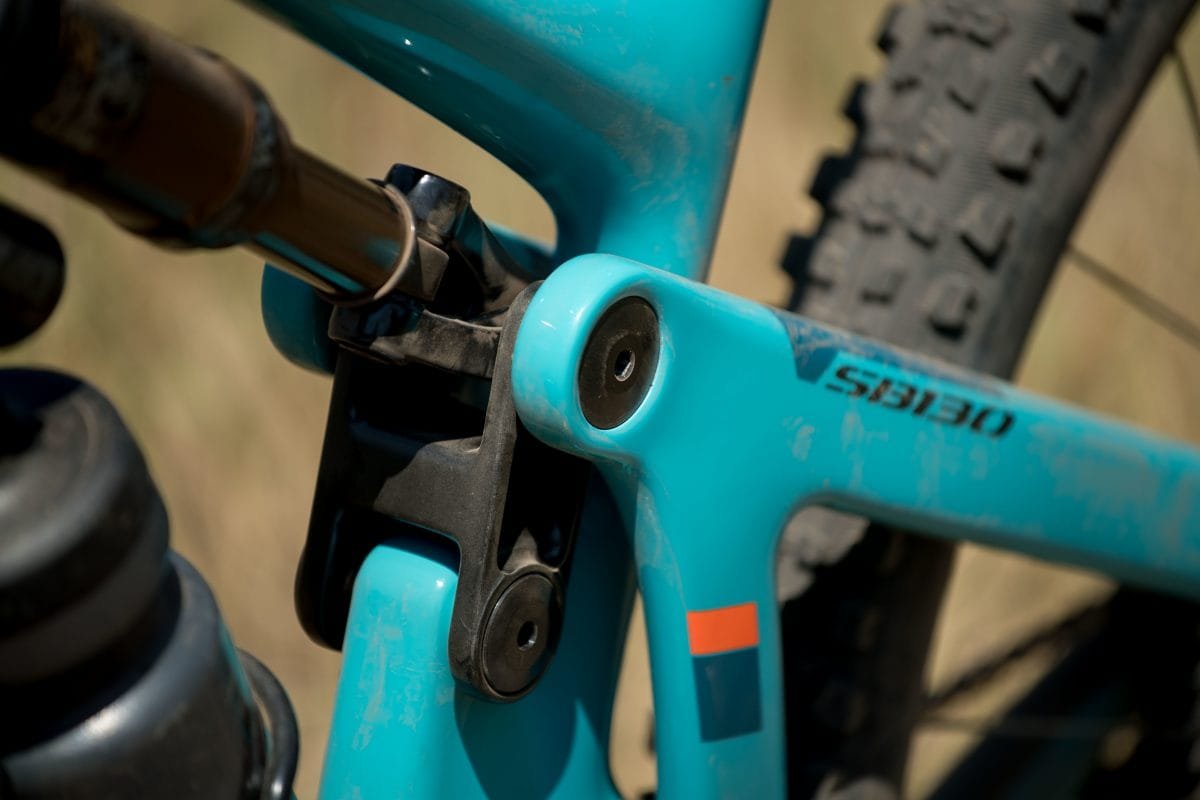
Both bikes make use of a shorter 44mm fork offset to enhance stability, a steep seat tube angle to dramatically improve technical climbing, and a roomier rider cockpit to maintain an appropriate amount of weight on the front wheel.
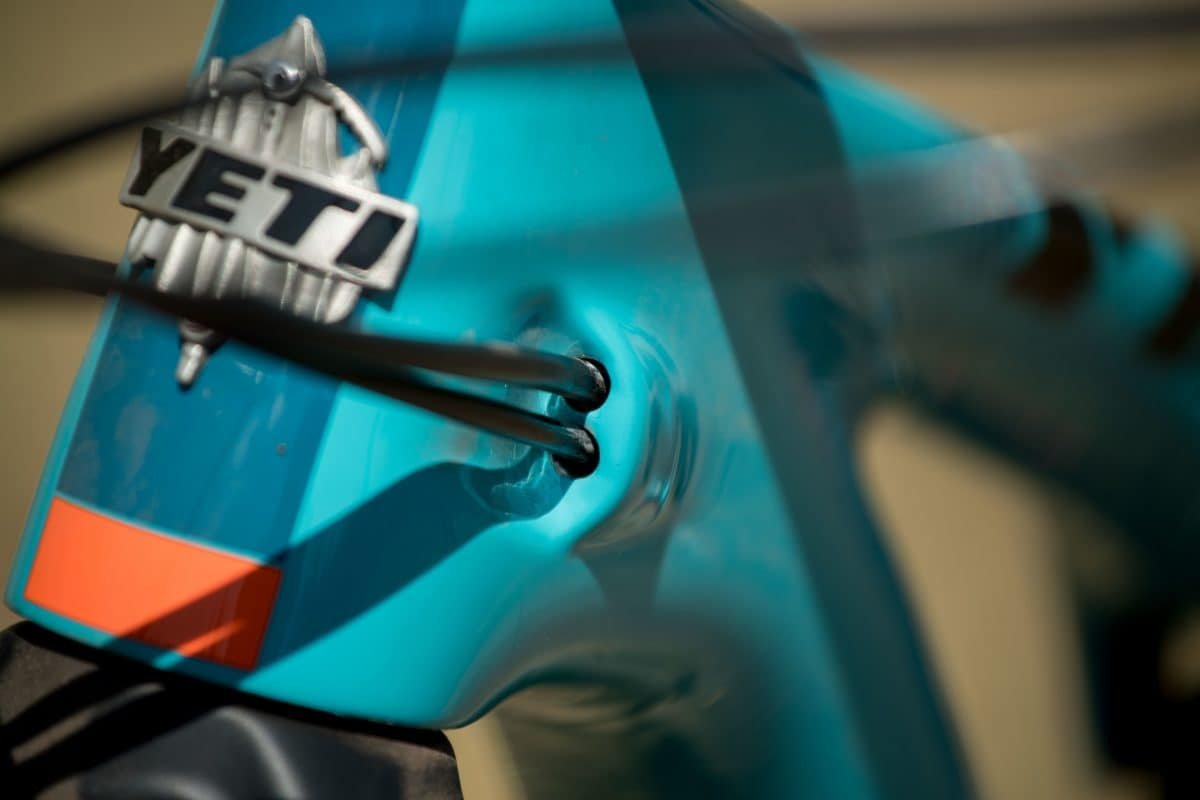
This geometry concept is rapidly gaining hold, with many of the latest class of 29 inch trail bikes displaying similar traits. It also makes comparisons for sizing between previous models difficult, as the comparatively massive reach measurements will have some riders considering sizing down. Avoid that temptation. The size medium bikes available for testing felt very roomy, but after some time on the trail, it became apparent that the extra reach offered by a large, the size recommended for riders 6′ tall, would have made the bikes easier to ride.
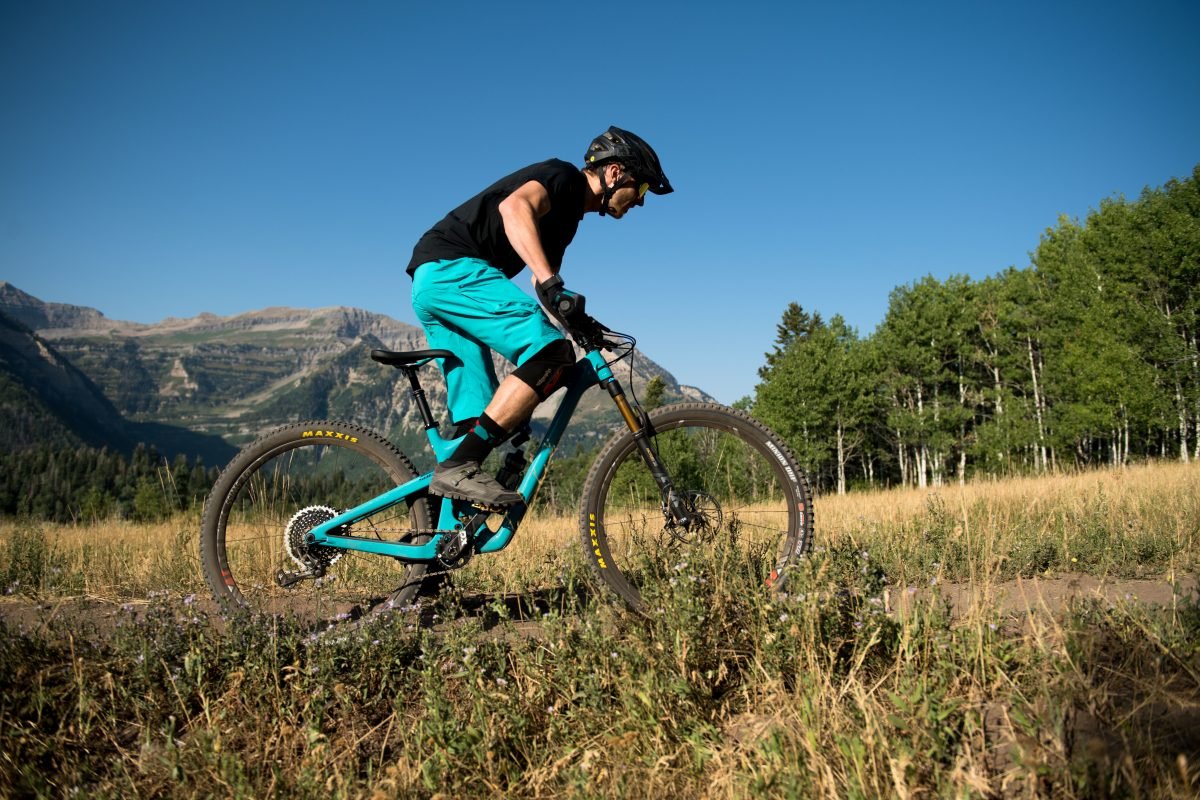
Some riders will protest that a smaller bike is easier to handle, but the truth isn’t so simple. Why? Because the seemingly massive reach measurements are a critical component of achieving correct weight balance. As our saddle time reinforced, the shorter front ends of our sized-down test bikes required a concerted effort to keep one’s weight forward in order to keep the front wheel tracking. It also just started to feel short with some time on the trail. Don’t overthink it, just go with Yeti’s recommended sizing.
Riding the New Superbikes
The family resemblance between the SB130 and the SB150 is as apparent in their on trail manners as it is in their unmistakable appearance. Both have cockpits that are very roomy, and that sensation is enhanced by their relaxed head angles, at 65.5 for the SB130, and a very slack 64.5 for the SB150. Both bikes have fairly short chainstays, yet manage to keep a great deal of weight on the front wheel thanks to the roomy cockpit and steep seat tubes. Given identical builds, the two bikes will be very difficult to tell apart until the going gets rough and steep, when the SB150’s longer fork hands it an advantage or the corners get quick, where the SB130’s shorter fork height makes it feel just slightly quicker when working through a chicane.
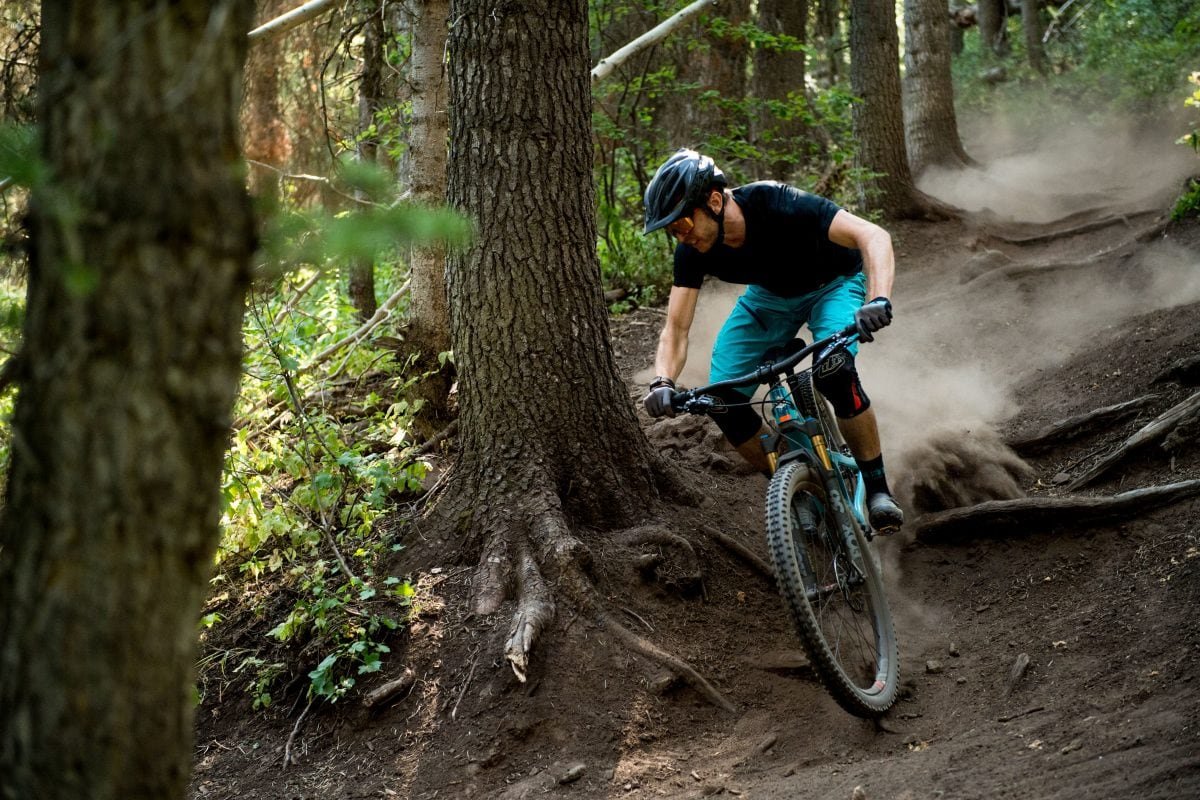
There really is something special about riding a Yeti Superbike, and whatever that special ingredient happens to be, both of these SB’s have it by the handful. Much of that sensation is down to a finely tuned chassis that works beautifully with the latest iteration of Yeti’s Switch Infinity platform. As before, Yeti’s signature suspension design hinges on a shuttle that travels upwards as the suspension settles into the sag point, then switches direction, traveling downward through the remainder of the stroke. Fully understanding what’s going on here requires a better than average understanding of kinematics, but the short version is that it results in remarkable efficiency under pedaling, a great degree of sensitivity to trail chatter, and controlled progression that makes the Superbikes fairly resistant to bottoming and very easy to tune.
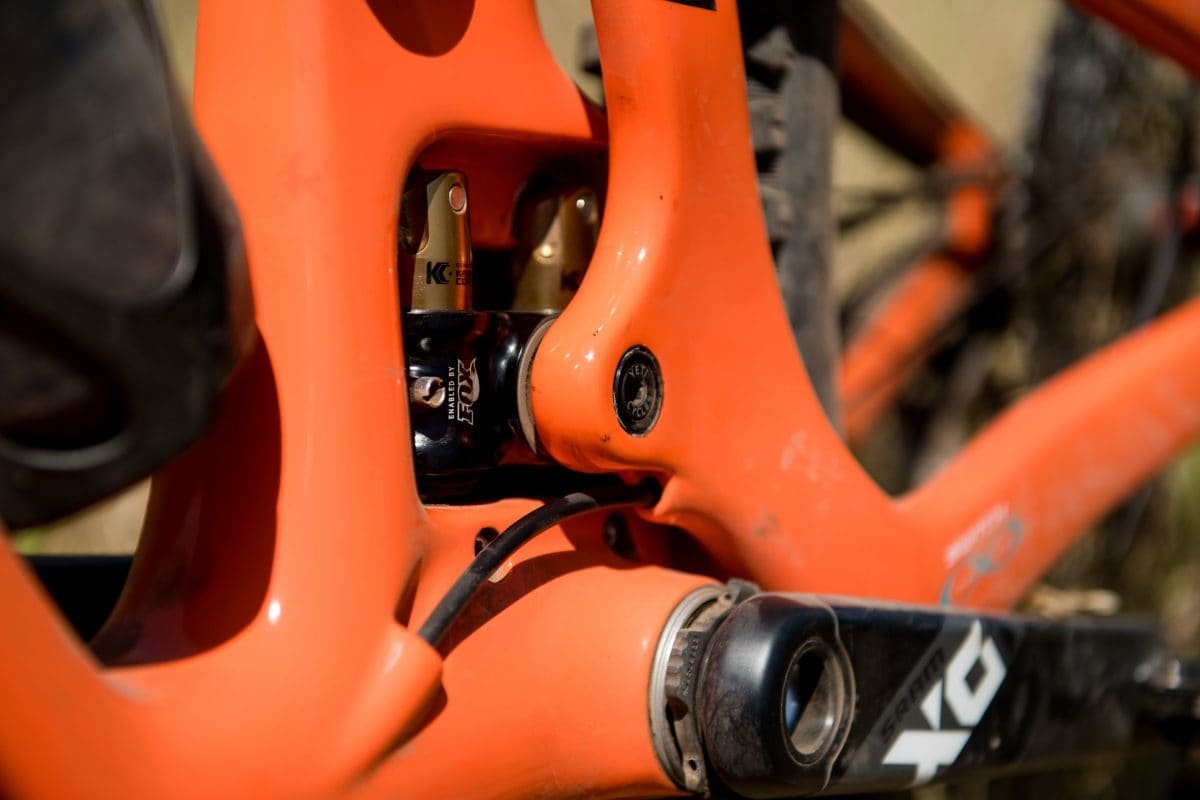
On the trail, both bikes feel firm when responding to rider inputs, yet in both cases, the rear wheel seems to glide over small and medium size chatter. The former characteristic encourages the rider to pump the terrain to make speed, while the latter enables the SBs to roll up to speed with a noticeable quickness. They don’t feel as “plush” as a well set up Evil, for example, but the degree of small bump compliance is nevertheless on par, which should be taken as the highest praise. The upside is that the added firmness gives both Yetis a very race-like feel that’s easily appreciated by less aggressive riders as well. Both bikes climb very well compared against their respective classmates, with plenty of weight on the front wheel to keep the bike planted punchy sections, although their generous wheelbases and relaxed steering angles mean that both bikes require calculated, deliberate line choice when faced with a tight switchback.
A Word About Chassis Flex
Although the suspension design typically gets most of the credit for the SB130 and SB150’s handling, there is another factor that is much harder to quantify, but no less essential. That component is chassis flex and although it’s been presented as an issue in some other reviews, chassis flex is actually part of what makes these bikes work so well on the trail.
While both bikes are very stiff at the front end, which is unsurprising given the girth of the down tubes, both bikes display a greater degree of torsional flex in the rear end than you’ll notice with many of their other competitors. So then, how can any reasonable person possibly consider this a good thing?
There are two key considerations when answering this question– what is the upside, and under what conditions was this flex apparent? First, and most importantly, the upside is traction, full stop. When grip is scarce (think high speed off camber sections littered with dusty roots) the additional torsional flex allows the wheel to track the ground more precisely by allowing for a degree of controlled deflection, where a stiffer rear triangle can cause the rear wheel to step out, much like an overinflated rear tire.

Some riders will counter that the rear suspension should be solely responsible for providing traction, however, there is friction to overcome before any suspension system can start moving, and that friction comes at the expense of grip. In other words, there is more that can be done. This rear triangle flex isn’t a replacement, rather it works in harmony with the rear suspension, the natural flex in the wheels, and the give of the tires to track smoothly and predictably, more so than you’ll experience on stiffer bikes. It’s part of what gives these Superbikes their magic carpet feel. So then, about that second point, when was this flex a bad thing?
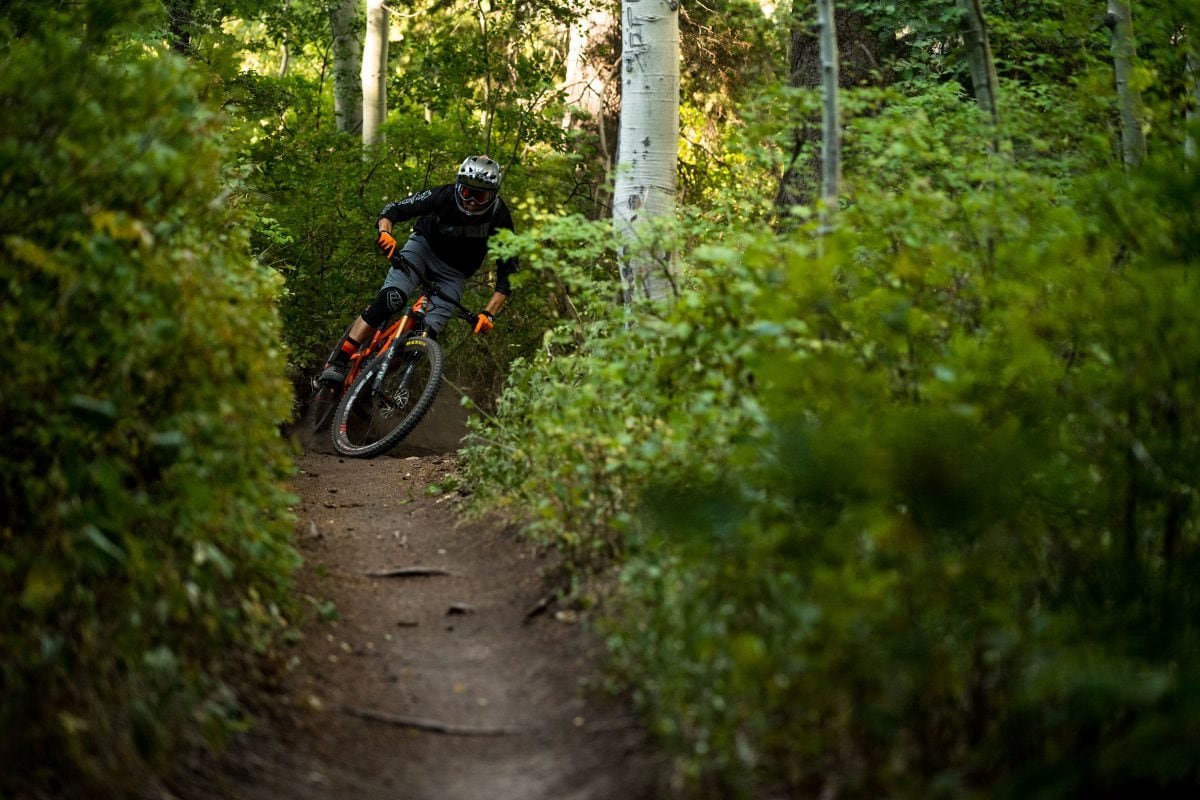
As mentioned, I did manage to flex the rear tire into the swingarm on both bikes, albeit in one particular circumstance. That circumstance was squaring up turns at speed. While the audible buzzing of the tire and minor rubber marks on the inside of the stays were worth mentioning, unless you’ve got Mike Giese skills
Riders well over 200 lbs, compulsive corner slappers, and a handful of message board superheroes, might find the SBs to be a bit too flexy. For everyone else, the flex is nothing to be afraid of, especially considering the upside that it offers.
The Next Generation
Both the SB130 and SB150 have very large shoes to fill, as their predecessors, the SB4.5 and SB5.5, have earned devoted followings. Although the SB130 arguably fills the void left by the SB4.5, in reality, it seems more like an SB5.5 with fewer compromises. While it gives up 20mm of rear wheel travel to its bigger predecessor, the aggressive demeanor endowed by its roomy front end and relaxed steering make it more composed even in the roughest sections, where one might assume that the 5.5 would have an advantage. Then again, the 130’s pedaling efficiency allows it to cover much of the territory once left to the SB4.5, with the SB100 covering the remainder. So with the SB130 covering the bases once split by the SB4.5 and SB5.5, where does that leave the SB150?
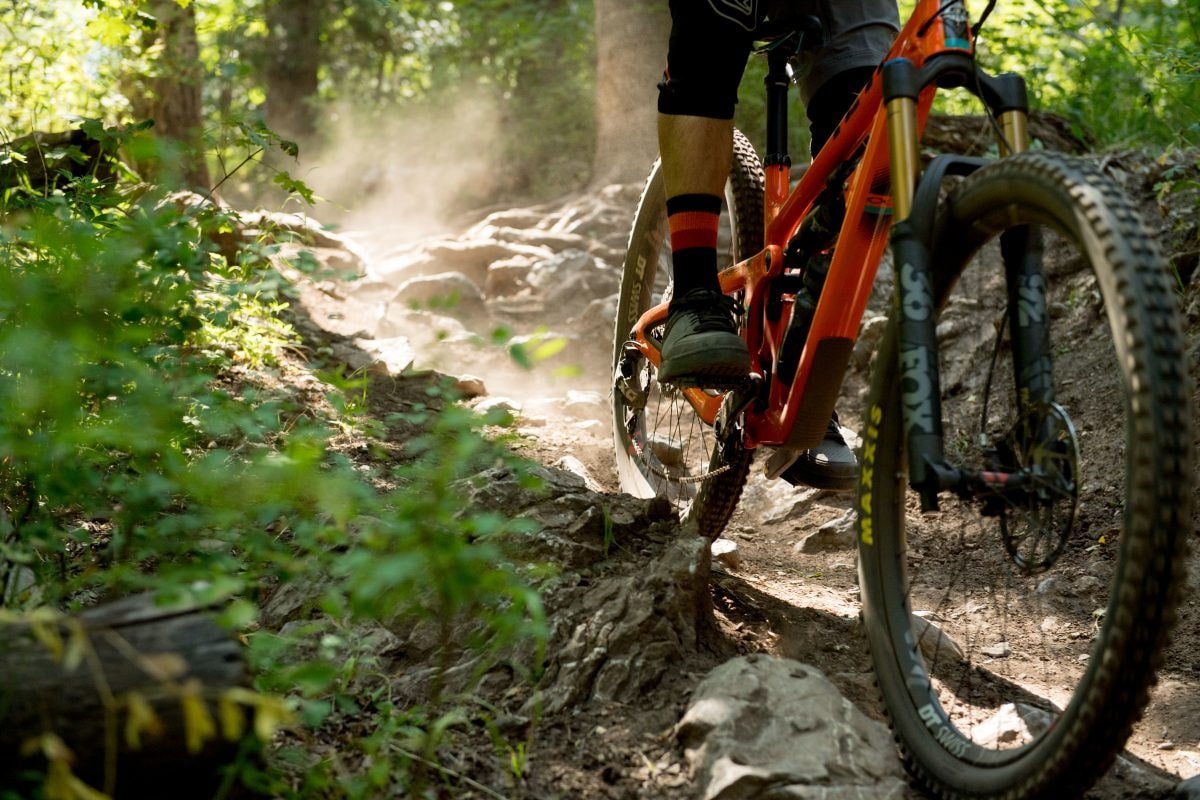
The Choice
Think of the SB150 as an SB130 with more margin for error at flat out speed or in the steepest of steeps. Although its handling and demeanor are very nearly identical, the additional 20mm of travel at both ends simply allow the rider to push harder. For serious enduro racers chasing EWS points, those who regularly spend days in the bike park, or riders with access to terrain once limited to full blown downhill bikes, the SB150 is the obvious choice, and it will serve those riders admirably. For everyone else, the SB130 offers 90% or more of the ragged-edge composure that you’ll get with its bigger sibling, while being more inspiring on more ordinary trails.
The upshot, of course, whether you opt for the added capabilities of the SB150, or you find yourself drawn to the “excel everywhere” mantra that defines the SB130, you’ll be riding a steed that’s genuinely worthy of Yeti’s esteemed “SB” badge.
